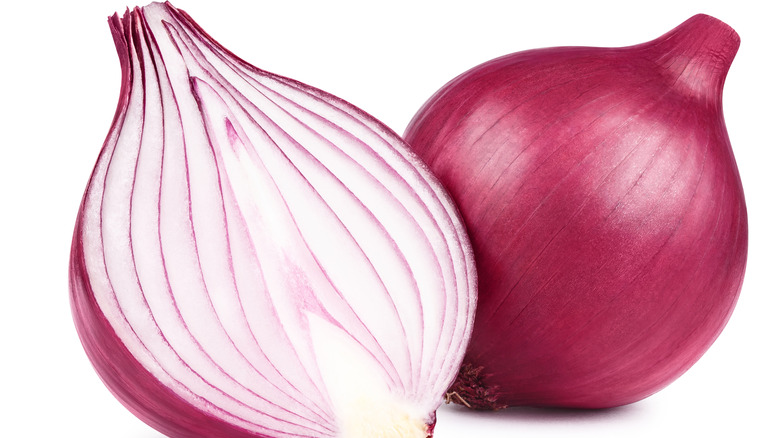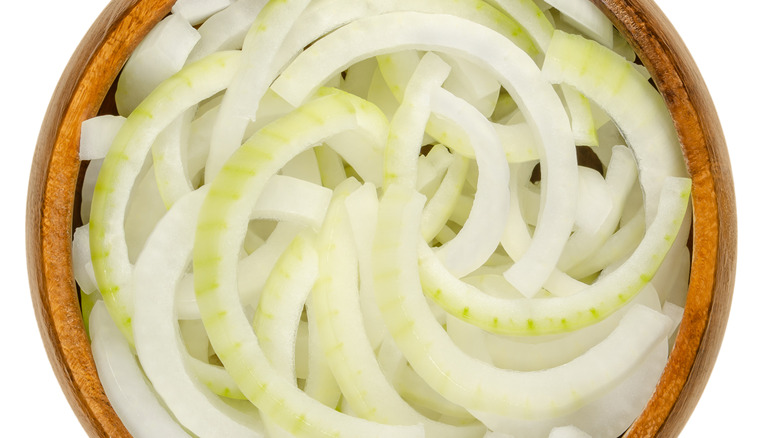This Knife Trick Changes How Onions Taste
Cutting an onion is one of the basic knife skills used for all types of cooking and cuisines, and it can make you cry for more than one reason. With its many layers and sometimes slippery texture, cutting an onion can be difficult, especially since the way you cut them can change their flavor or texture. There's more than one method to julienne an onion — or cut it into strips.
The lengthwise method cuts strips from root to stem while the crosswise method bifurcates the onion starting at either the root end or stem end and working towards the other. Believe it or not, how you choose to cut the onion affects how it tastes. As Theresa Gonzolas says on Brit + Co, "You can actually change the taste of the onion cutting an onion crosswise can actually make it more stringent versus lengthwise can make it a little bit more delicate tasting."
How you cut disrupts the cells in the onion
This change in flavor is because of the internal structure of cells within the onion that contain the chemicals that make it taste sharp. Inside the onion, "the layers of plant cells in an onion run from the root to the stem end of the bulb, the direction in which you slice onions can make a big difference in their cooked appearance and texture," according to Cooks Illustrated. Disrupting that structure by slicing crosswise causes the onions to soften, and break down easier while slicing lengthwise keeps the structure intact and preserves the shape when cooked (via Cook's Illustrated.), so when sliced lengthwise, the knife slices along the line of the cell walls, and less of them get torn open. However, when cut crosswise, the cell walls don't line up the same way, and the knife tears through them, releasing the gas that gives onions their intense aroma and flavor. This gas is what makes us cry and gives onions their distinctive flavor (via Misen.)

